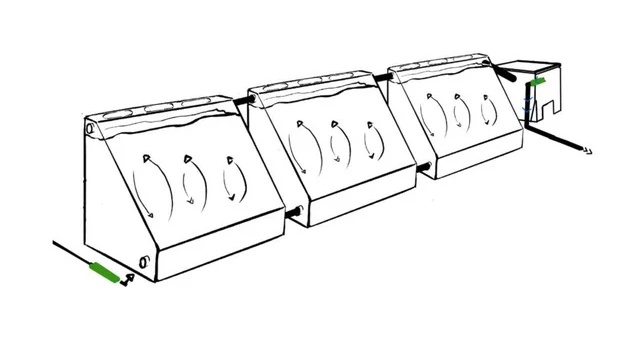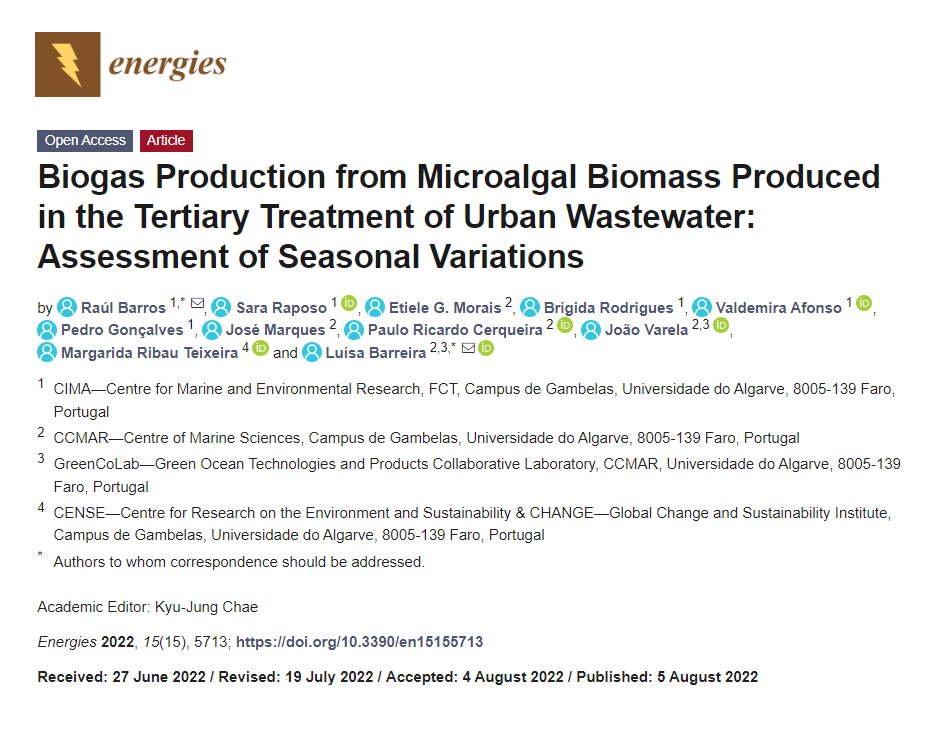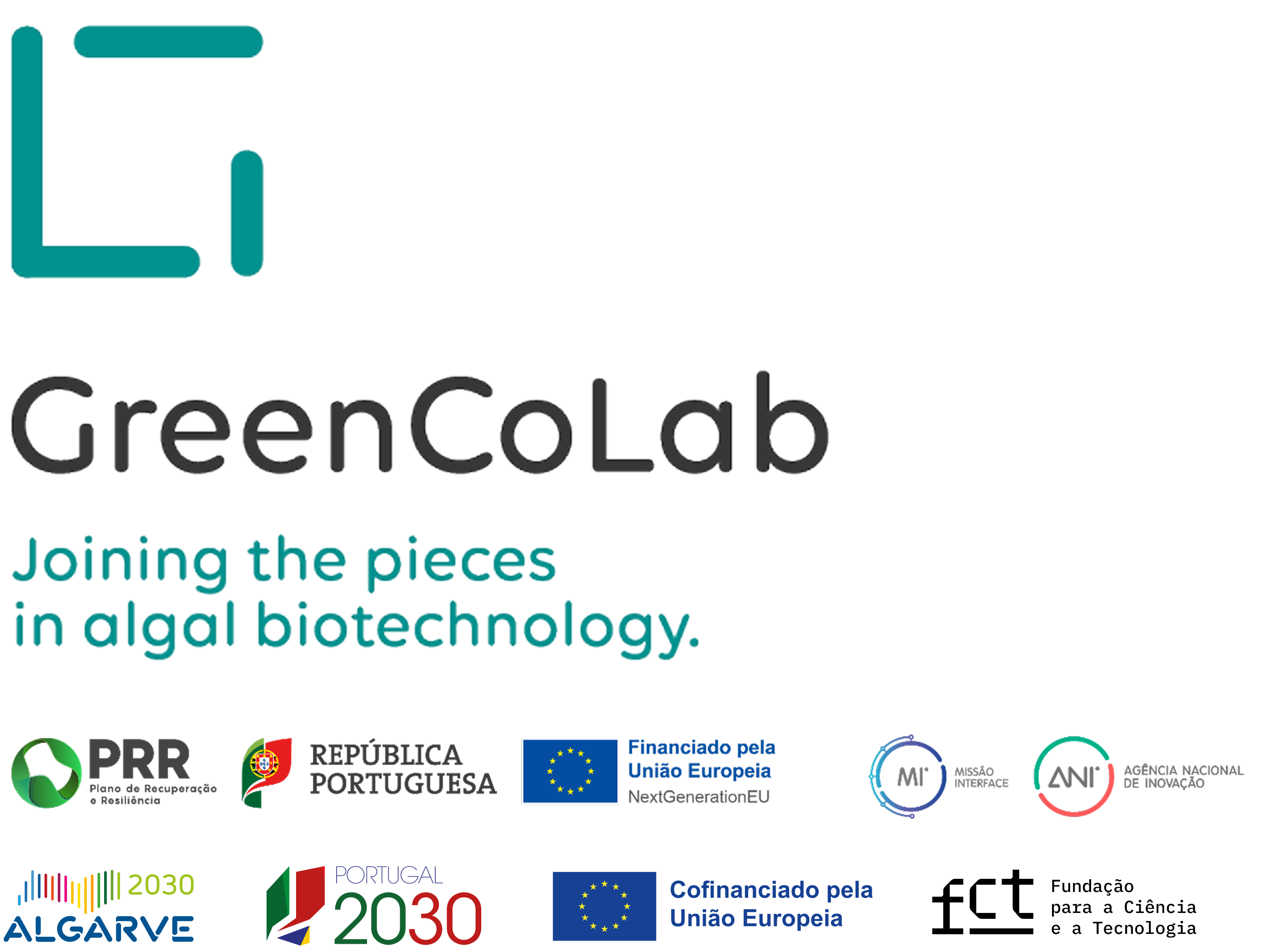

TITLE
Biogas Production from Microalgal Biomass Produced in the Tertiary Treatment of Urban Wastewater: Assessment of Seasonal Variations
JOURNAL
Energies
AUTHORS
Raúl Barros, Sara Raposo, Etiele G. Morais, Brígida Rodrigues, Valdemira Afonso, Pedro Gonçalves, José Marques, Paulo Ricardo Cerqueira,João Varela, Margarida Ribau Teixeira and Luísa Barreira
ABSTRACT
The valorization of microalgal biomass produced during wastewater treatment has the potential to mitigate treatment costs. As contaminated biomass (e.g., with pharmaceuticals, toxic metals, etc.) is often generated, biogas production is considered an effective valorization option. The biomass was obtained from a pilot facility of photobioreactors for tertiary wastewater treatment. The pilots were run for one year with naturally formed microalgal consortia. The biogas was generated in 70 mL crimp-top vials at 35 °C, quantified with a manometer and the methane yield measured by gas chromatography. A maximum biogas production of 311 mL/g volatile solids (VS) with a methane yield of 252 mL/g VS was obtained with the spring samples. These rather low values were not improved using previous thermo-acidic hydrolysis, suggesting that the low intrinsic biodegradable organic matter content of the consortia might be the cause for low yield. Considering the total volume of wastewater treated by this plant and the average amount of methane produced in this study, the substitution of the current tertiary treatment with the one here proposed would reduce the energy consumption of the plant by 20% and create an energy surplus of 2.8%. The implementation of this system would therefore contribute towards meeting the ambitious decarbonization targets established by the EU.



